Transmoto’s 2013 450cc MX Bike Group Test Insights
An insight into bike specs, set-up, testing methodology and scoring.
Aside from being our special themed Supercross Issue, the February Issue of Transmoto also contains a huge 22-page group test on the 2013-model 450cc motocross bikes from the five leading manufacturers. But why only the 450s, and why now? Because 2013 represents a fascinating juncture for these premier-class bikes. The 2013 KTM 450SX-F is an all-new machine that’s just won the AMA Motocross Championship. The Honda, Suzuki and Kawasaki all get sweeping upgrades for 2013, and all three are fitted with either Showa’s SFF or Kayaba’s PSF air fork for the first time ever. Meanwhile, amid all these overhauls, the Yamaha – the machine that’s won the past three Australian Motocross titles – has changed little more than its grip glue and graphics. Which makes it the perfect static benchmark against which the four new machines can be evaluated…
So if you haven’t seen the mag article, go grab yourself a copy. If you have already seen it, the info here offers a more detailed insight into our testing process and the test bikes’ specs and set-up; all of which is to ensure a level playing field for the five machines.
And in case the magazine’s black-and-white theme left you yearning for a more colourful perspective of the two-day test session, you’re in luck. The boys from Russell Brothers Films have produced a great behind-the-scenes edit with footage at both the sandy and hardpack test tracks, along with feedback about the bikes directly from the test riders themselves.
Bike Set-Up
All five test bikes were tested in completely standard trim. Not only does this ensure a level playing field, it also generates the most relevant feedback to readers – most of whom will buy a motocross bike off a dealer floor. Even though we tested on both soft and hard tracks, each bike ran its OEM set of intermediate-terrain tyres – either Bridgestone’s M403/404s or Dunlop’s MX51s. As the Suzuki and Kawasaki come with EFI mapping couplers in their parts kit, these two bikes had the option of changing maps during the test. The other three bikes didn’t, as they require owners to purchase map-setting tools – an expense over and above the bike’s retail price.
Similarly, we allowed mid-test adjustments to be made to the Suzuki’s SFF fork (which has external spring preload adjustment) and the Honda and Kawasaki’s PSF (whose ‘spring rates’ can be altered by changes in air pressure). The KTM and Yamaha weren’t able to make these suspension adjustments as it’d require the fork legs to be split to do so.
The Scoring
The way test bikes are scored and ranked in group tests will always be a contentious one, and – surprise, surprise – you never get consensus from all manufacturers over the methodology. But, after staging group tests for 15 years, we’re confident that the way we go about it produces the most accurate and relevant outcomes. Without boring you senseless, here’s how it works:
- Testers fill out a detailed scorecard that’s distilled into a score out of 10 for each bike’s engine, suspension/steering and ergos/brakes. They do this alone to ensure their feedback is not influenced by other test riders.
- Test riders’ submitted scores are aggregated and subjected to a weighted average – 50% for engine, 40% for suspension/steering and 10% for ergos/brakes.
- We then sit down for a two-hour feedback session after the track testing to add some colour and dimension to those scores. Here, the objective is to determine what sort of rider, terrain and riding style each bike best suits.
- Because low scores for ergos (such as a too-soft seat or strange bar bend) are easy and relatively cheap to fix. Low scores for engine and suspension, on the other hand (poor throttle response at low revs or a deflecting fork action, for example), are not only much costlier fixes; they also have a larger impact on the bike’s performance and lap time potential.
- If we didn’t apply a weighted average, it can create misleading results. Let’s say Bike A scores 9 for engine, 9 for suspension and 6 for ergos. Bike B scores a 6 for engine, 9 for suspension and 9 for ergos. Both bikes’ total score adds up to 24, or an average of 8 out of 10. In which case, their overall score and rank would be identical. But which bike would you rather buy? Naturally, Bike A – because for some added seat foam and a $100 handlebar with a better bend, you’ll be way ahead of the bloke who bought Bike B and then had to spend $1000 on a pipe, cam and head porting to bolster its engine performance from a 6 to a 9 out of 10.
Why apply a weighted average to the scores? A few reasons:
The Riders
Luke George, 22, 180cm, 70kg…
Background: After a standout Junior career and personal tuition from Chad Reed, Luke George won his first Australian MX Nats title in 2008 at age 18. He then took a trip to America, impressed the hell out of Pro Circuit’s Mitch Payton, and appeared to have the motocross world at his feet. But a huge crash at the end of the ’09 season turned Luke’s life upside down and made the young racer re-evaluate things. He made a comeback and proved that he could still dice with the Lites-class front-runners, but with his heart not entirely in it, Luke decided to step away from the sport. There were no emotional retirement speeches; he simply explained that it was time to move on to the next chapter of his life. For a couple of years, the happy-go-lucky kid consumed himself with pig hunting and building up his rider tuition business (Luke George Coaching), which has quickly become a great success. Along with his fiancé, Luke lives and works out of the George family home north of Newcastle, which is surrounded by several sweet practice tracks. There was talk of Luke returning to racing earlier
this year, but he seems content to foster young talent and cut sick in his own back yard for the time being.
Bike set-up: “With the Japanese bikes, I’ve always liked the things set up so they’re tall in the front-end for fast sand tracks like my own practice tracks. And that’s why the instant adjustability of the new SFF and PSF air forks is so good. I always ride on the front to middle of the bike – no matter what the terrain – and that’s why I’d take more time to adapt to the KTM. To get the power to the ground, you watch how much all good KTM riders are over the rear of the bike.”
Beau Ralston, 22, 187cm, 88kg…
Background: In 2008, a relatively unknown 18-year-old called Beau Ralston rocked up at the Lakes track and towelled up Jay Marmont and Cheyne Boyd. Admittedly, it was only a club day and Lakes is a track where Ralston had cut thousands of laps. But the lanky kid showed had what it took to bang bars with the country’s best motocrossers and, on the strength of that performance, JDR Motorsports signed him for the next couple of seasons. Despite a string of injuries and DNFs, Ralston still managed to finish top-10 in the MX Nats Championship in 2009, 2010 and 2011. And along the way, he carded a few standout third-place moto finishes, dicing with the likes of Jay Marmont, Daryl Hurley and Andrew McFarlane. For the past two seasons, Ralston has raced the national MX and SX circuit, either as a privateer or on Craig Anderson’s Berry Sweet Yamaha team, simultaneously working as a contract concreter around his hometown of Newcastle to put food on the table for his young family.
Bike set-up: “The time I spent as a privateer helped me understand the importance of developing my bike set-up skills. I’m a fairly heavy and tall guy with a lot of leverage over the bike, so I like my suspension to be set up on the firm side. I tend to set up a bit earlier for corners and try to flow through them instead of blowing the berm out. It’s really important to me that the chassis is well balanced and sits flat. I sit well forward on the bike, so I put a lot of effort into getting a good feeling from the fork. That’s the key for a lot of the high-speed hardpack tracks you get here in Australia.”
Josh Green, 22, 180cm, 80kg…
Background: A young punk with motocross attitude rarely goes un-noticed in the laid-back enduro scene, and that’s how most people came to know Josh Green. After winning the AORC’s Junior Lites title in 2006, Green proved that his hang-it-out, on-the-limiter motocross style could work in off-road racing, and in 2008 and 2009, he finished third and second in the AORC’s Pro E1 class. Greeny then took himself overseas and immediately proved he could cut it on the world stage. Aboard a fire-breathing 300cc TM two-stroke, he surprised many in the Enduro World Championship when he took a Junior-class round-win in just his first year in Europe. Like many young racers, injuries caught up with him and sidelined him for much of 2011. But in 2012, he returned a more mature and calculated rider and proved he’d lost none of that raw speed. With the Active8 Yamaha team, Green ran second in the hotly contested E1 class at the AORC and then came second to Toby Price at the 2012 Hattah Desert Race – in his first ever foray into desert racing. Living in a dirt bike stronghold near Newcastle, Green rides
and trains himself inside out, and pursues the dream of being a full-time Pro rider. But for the time being, he still relies on his waterproofing business to pay the bills and make ends meet.
Bike set-up: “I look for a balanced chassis and a plush ride that doesn’t bottom-out too much. I tend to drag the rear brake a lot to settle the rear-end through bumps. On motocross tracks, I like to rear-wheel steer a lot, but on tighter bush tracks, I get on the bike’s nose and steer with the fork. Like everyone, I prefer a strong engine, but I like it to be more linear than punchy. And I prefer a stable chassis over a super-nimble one.”
Mark Brown, 34, 169cm, 67kg…
Background: From age 16, Brownie raced A-grade motocross against the likes of Craig Anderson and Danny Ham and, with his old man running the Mt Kembla Motocross Complex back then, this teenage tearaway was forever cutting practice laps there. But when he busted five vertebrae in his neck in 1995 and came within a whisker of being paralysed, Brownie used his recovery time to put himself through a four-year sign writing apprenticeship and refine the art of airbrushing. He started his own business, Browns Grafix, and these days, Mark “Hot Diggity Browndawg” Brown is a helmet painter to the stars, supplying creatively enhanced lids for what seems like half of the riders in the national motocross and supercross paddock. He also does a bunch of artwork for the likes of Red Bull International, Monster, Ferrari, Qantas and Cadbury, and has aesthetically altered everything from F1 cars and helicopters to steam trains and motor homes. In 2002, Brownie climbed back on a motocross bike for the first time in seven long years and has frothed over his riding like a teenager ever since. On top of forming a freestyle pitbike posse who’s entertained big crowds around the country, Brownie has also notched up two Guinness World Records (at the Le Minz Scooterthon, for the longest distance covered in 24 hours) in the past couple of years.
Bike set-up: “I’ve spent most of my time on Suzukis, Kawasakis and KTMs in recent years. These days, I’m into flowing and linking sections of the motocross smoothly, rather slamming everything like a mad Under 19s guy. I guess you could say I’m a bit of a lazy rider now, and I’m much more comfortable riding hardpack than sand. The key thing for me with set-up is to get the bike plush and user-friendly so it’s not energy-sapping and so I can ride all day.”
Phil Harper, 39, 182cm, 85kg…
Background: Growing up on a farm in the Central West of NSW, Harps rode whatever he could get his dirty mitts on – motocross, dirt track and enduro – and progressed to road racing in his early 20s. In knee scraping circles, he was a regular top-10 Australian Superbike finisher in the mid-1990s and ran second in the notorious Castrol 6-Hour race in 1997. Ironically, it was road racing that got him back into riding motocross. “Motocross was the perfect cross-training for a lot of us guys racing Superbikes back then,” he explains. “Aside from keeping my fitness levels where they needed to be, it reminded me about how fun it was, and how stupid I was to stop riding dirt for a few years there.” After a life-threatening crash, Harps settled in behind a desk at Monza Imports in Melbourne for five years, working as the Brand Manager for Fox Casual Clothing until 2007, after which he moved to Sydney’s Northern Beaches and began distributing lifestyle brands in the action sports industry. These days, he remains a regular in the national MX and SX pit paddock, and always seems to have a fresh-looking ex-race team bike when he rocks up at club motocross meets or for the odd crack at the Over 35s Vets class in the MX Nats.
Bike set-up: “Because of my road racing experience, I tend to look for the smooth, free-flowing lines on the motocross track these days. For me, a good bike is all about getting the front-end set-up right, a well-balanced chassis and a strong front brake. And because I’ve bought a heap of race team bikes over the years, I like my motors to have strong but smooth power delivery. It allows me to be lazy on the bike cos, let’s face it, I’m not as fit as I once was.
The Test Tracks
To guarantee a well-rounded picture of the bikes’ performance on both soft and hard terrain, we took them to two totally different tracks, testing for a full day on each:
Sand and Loam
For the first day, we cut laps at one of Luke George’s practice tracks; a big, deep sand track with a great mix of fast straights and sweepers, slow 180-degree turns and a gnarly set of high-speed Finke-style whoops. Luke had graded it dead flat to begin with, but with five bikes ripping into it, the thing was soon littered with multiple berm options, deep inside ruts and big, bike-swallowing holes and whoops. Aside from being great for photography, the soft terrain gave testers a good feel for chassis balance and the engine’s torque, gear ratios and outright horsepower.
Hardpack
On the second day, we headed to Barleigh Ranch at Raymond Terrace; a track that’s often been used for the MX Nats over the past decade and will play host to the opening round of the 2013 series in April. Having been used for weekend practice, it was very rough with merciless, square-edged bumps, bluegroove patches, big doubles, downhill ski jumps, hardpack inside ruts and powdery outside berms. Not an easy track to ride, but perfect for testing. Which is why we asked the facility’s caretaker to leave it exactly how it was. With its undulating hardpack layout, Barleigh Ranch gave testers the opportunity to get a feel for engine tractability, chassis stability under brakes, and suspension performance over high-speed choppy bumps and big jump landings.
Bike Specs
To view the full size specs table, please click here.
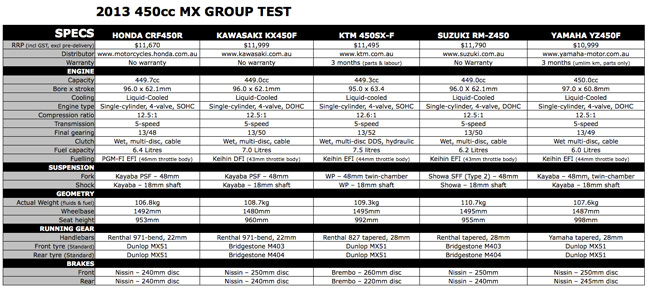
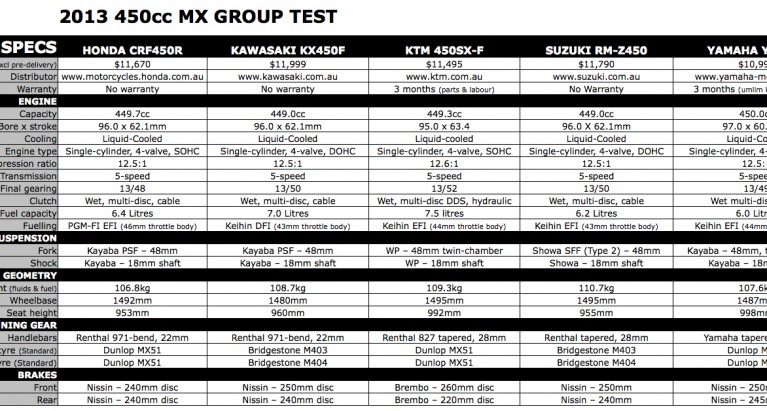

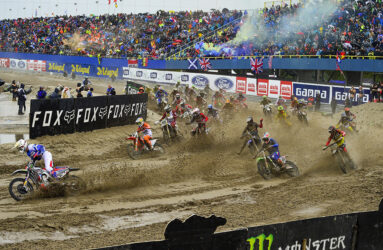
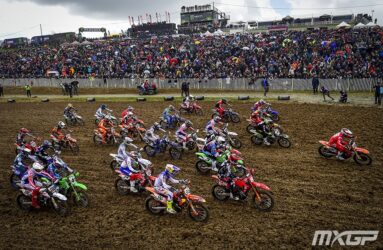
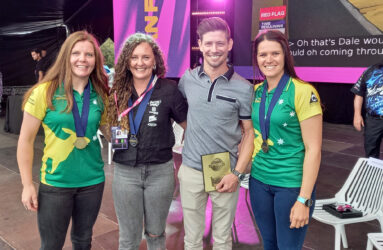
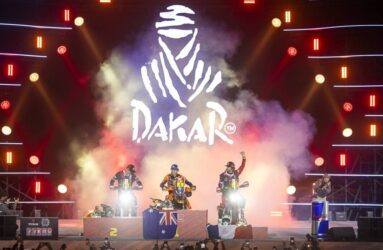
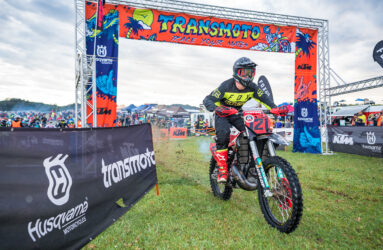


Be the first to comment...